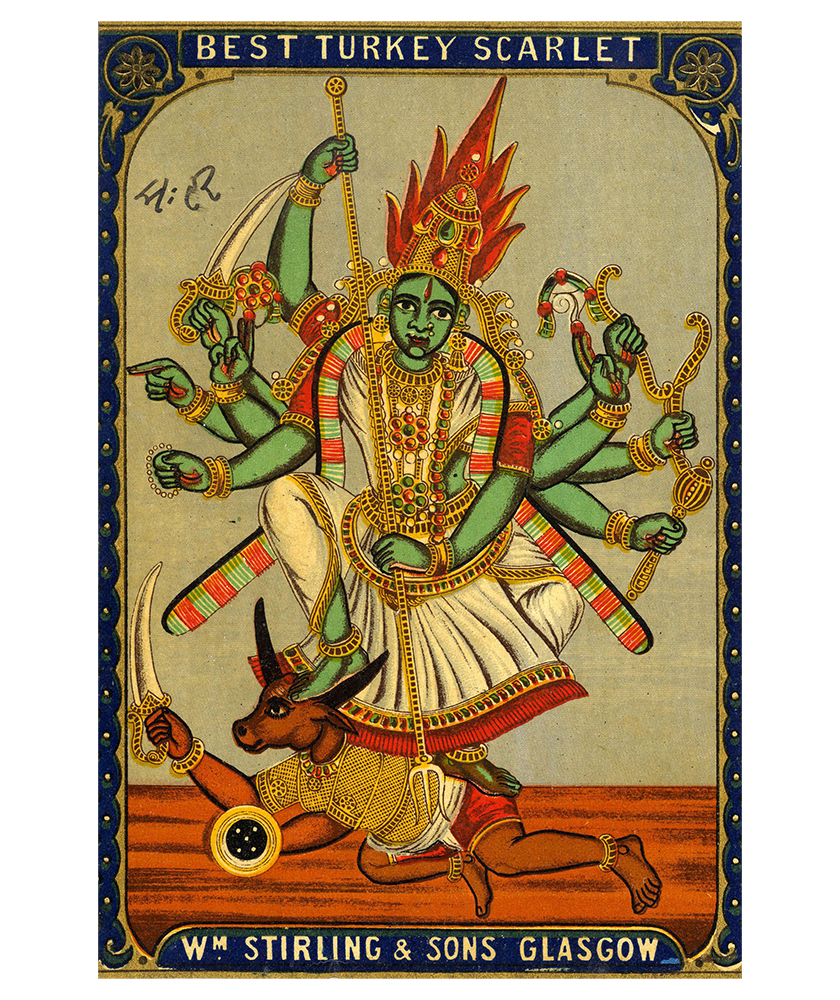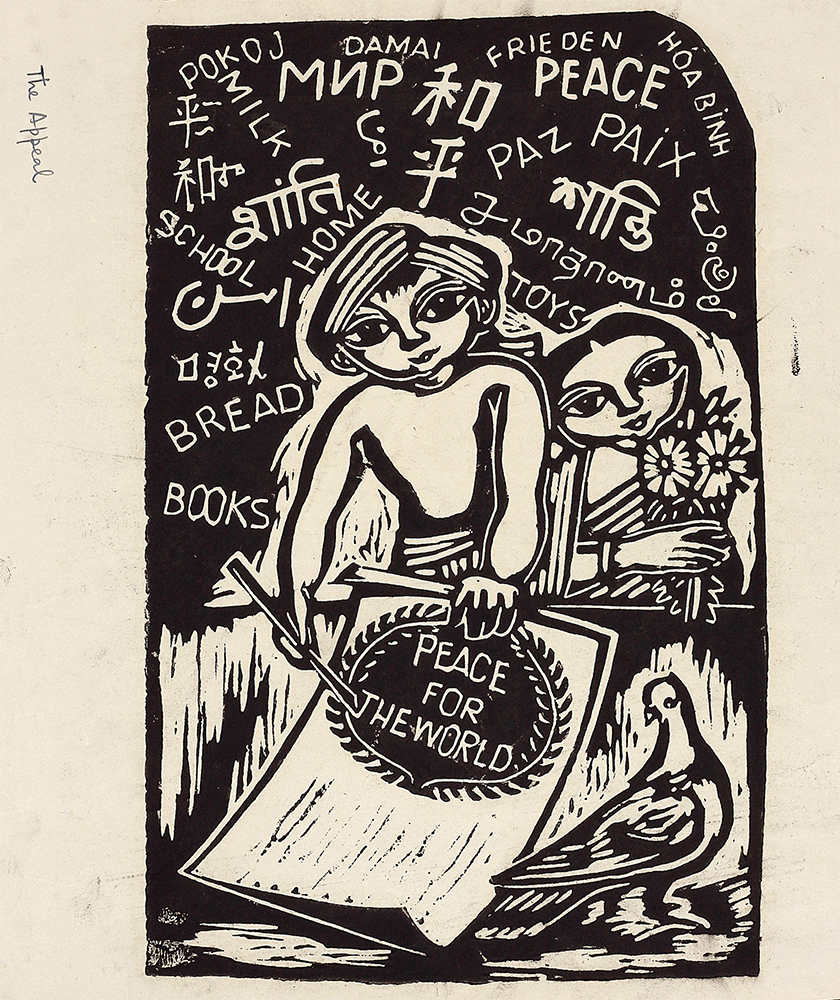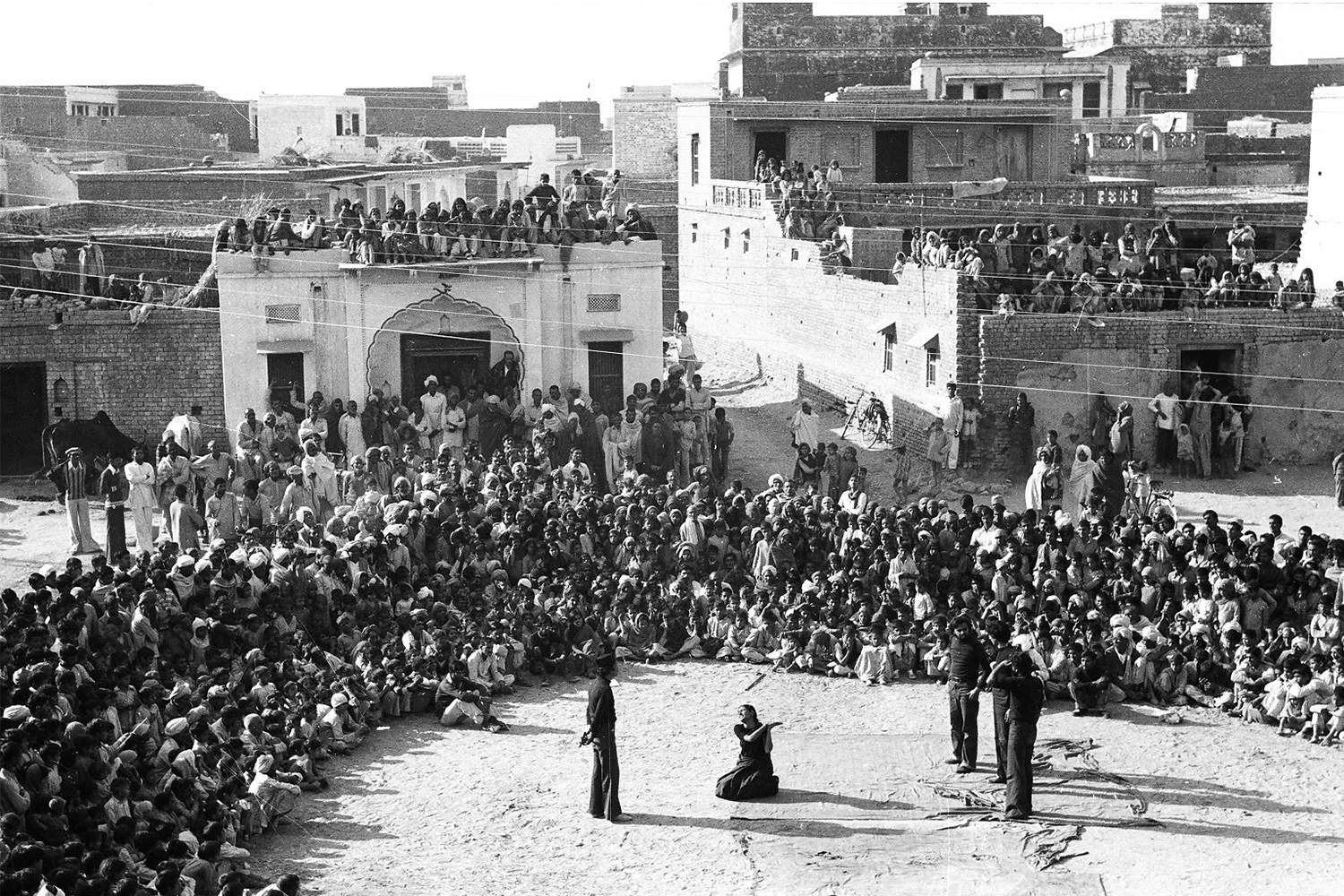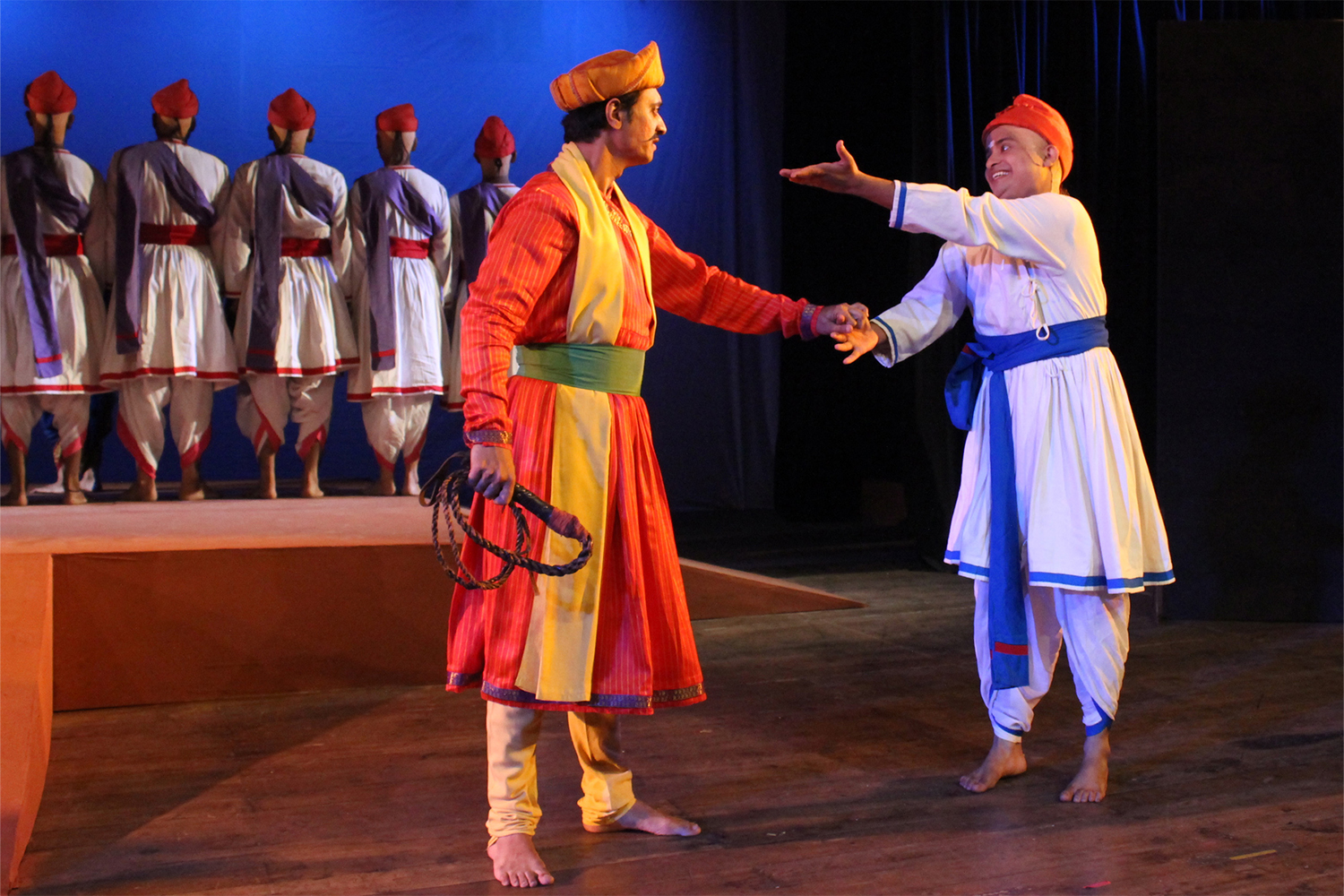ARTICLE
Censorship in Indian Art
Beginning under colonial rule in the nineteenth century, censorship of art in the Indian subcontinent continues to be a polarising issue in public discourse. Outrage and uproar over artistic licence have occurred throughout history, but the scale of censorship in modern history — either as a juridical and political process in nation-states, or as a social force — is unprecedented. Censorship and calls for censorship in modern South Asia have largely revolved around perceived insults and mockery, blasphemy, obscenity, and politically-motivated subject matter.
The Constitution of India guarantees freedom of speech in Article 19, unless there is a demonstrable threat to disturbing religious and communal harmony. Censorship in the subcontinent has at various points in time, emerged from a range of initial responses to art, including public outrage, political or cultural boycott, vandalism and other reactive measures, and legal cases lodged against the offending party with charges such as obscenity and hurt religious or cultural sentiments. The offensive work of art is consequently seized, banned from release or exhibition or at times, physically attacked and vandalised.
During the colonial period, censorship was enforced through the Press Act of 1910. In addition to the Rowlatt Act of 1919, which limited the possibility of the free articulation of political organisation by Indians in both visual and verbal form. To circumvent these laws, artists sought alternative forms of visual culture to express their dissent, patriotism or radicalism. One such avenue was bazaar prints, which had a large audience and drew largely from religious and mythological narratives and motifs. Since these were initially seen by the British as belonging to the sphere of religion rather than politics, many prints became vehicles of dissent, with traditional iconography used to express allegories of colonisation. Such prints were circulated as souvenirs from political meetings, and distributed as placards and pamphlets. In December 1911, an image of the Hindu goddess Durga, as Ashtabhuja Devi was banned. In the image, the goddess is depicted with eight arms, carrying weapons, and slaying the half-human half-buffalo demon Mahisha.When it appeared on matchboxes a month later, the matchboxes were also censored.
The Hindu cosmological notion of the kaliyug as a dark age was used as a template to signify colonial rule. Images of the goddess Kali killing a demon came to signify not the abstract concept of the defeat of evil, but a very specific event: the future defeat of the British. The proliferation of these visual messages was a matter of concern for colonial authorities, and they came to be banned.
The Communist Party of India also made use of art for political propaganda, especially in vernacular language papers and party publications. Sketches of the Bengal Famine by Chittaprosad were published serially in People’s War and then in a booklet called Hungry Bengal (1944). The colonial government banned the book and destroyed nearly all copies. Sunil Janah’s photographs of the famine were circulated as picture postcards and travelling exhibitions, making it difficult for the government to ban them.
Morality also emerged as a cause for censorship and calls for censorship in the 20th century. A significant example of the latter was MK Gandhi’s call for the erotic sculptures in the temples of Konark and Khajuraho to be plastered over with cement. Artists and thinkers from Shantiniketan, including Rabindranath Tagore, Abanindranath Tagore, and Nandalal Bose, later managed to convince Gandhi of their artistic merit and cultural significance. However, calls for censorship on moral grounds continued to become increasingly strident through the decades, and many such calls were enforced by state institutions even after Independence.
In 1949 at a Bombay Art Society exhibition, the modernist painter FN Souza’s nude self-portrait attracted controversy for obscenity. The police first covered up the image of genitalia in the painting, then eventually seized it, along with three other works deemed to be ‘objectionable’. This was followed by a raid of Souza’s studio in search of suspected pornographic material. In 1954, Akbar Padamsee’s solo debut show was held at the Jehangir Art Gallery, where two paintings, Lovers 1 and Lovers 2, attracted controversy as some viewers objected to the depiction of a man’s hands on a woman’s breast. A police complaint was made, and Padamsee was charged under Section 292 of the Indian Penal Code. The paintings were seized, and a legal case ensued. The Bombay High Court judgement of 1954 noted that the paintings were exhibited in an art gallery and that the paintings adhered to existing artistic conventions of depicting figures in the nude. Padamsee was thus acquitted of the charge for obscenity, and the paintings were returned to him.
In the 1970s and 1980s, selective censorship began to be used as a form of political propaganda and canvassing. For instance, the play Ghasiram Kotwal written by Vijay Tendulkar faced widespread protests against its content after it was first staged in 1972, with agitations against the play being held by members of the Shiv Sena. The play, which was a political satire commenting on the rise of the party, was vilified due to its depiction of Nana Phadnavis, which was touted as hurting the sentiments of the Chitpavan Brahmin community.
Censorship also took the form of brute force and violence. Safdar Hashmi, a playwright and activist associated with the Communist Party of India (Marxist), was attacked by workers associated with the Indian National Congress, led by Mukesh Sharma, mid-performance at a factory in Ghaziabad on January 1, 1989.
There are several instances of political and moral outrage that almost always led to censure, most noticeably emerging in the late 1980s and 1990s with censorship movements around hurt religious sentiments. The work of MF Husain, a prolific post-Independence painter, became a cultural flashpoint in the 1990s. His line drawing of the goddess Saraswati made during the 1970s were published in magazines associated with Hindu fundamentalists in the 1990s. The line drawing expressed concepts from traditional iconography and sculpture, but the fact that it was made by a Muslim artist, coupled with misinterpretations of the drawing as lascivious and obscene, provoked a public outcry. Censorship became the rallying call of the different political actors and pressure groups, and eventually led to the artist’s self-imposed exile from the country.
In 1993, a travelling exhibition titled Hum Sab Ayodhya, organised by SAHMAT was attacked in Faizabad, Uttar Pradesh, by workers associated with the Bharatiya Janata Party on the pretext of hurt religious sentiments. The issue was first brought to public knowledge by the party members alleging inappropriate posters displayed as a part of the ‘Rama Katha’ section of the exhibition, which highlighted narratives around the Ramayana from the Pali canon and Jain texts. The text panel was seized under section 95 of the criminal procedure code and charges were filed against SAHMAT on August 16 over disturbing religious harmony, deliberate intent to hurt religious sentiments, igniting public outrage and mischief and criminal conspiracy. Debates around the alledged offensive content of the exhibition erupted during a Parliament session on August 20, 1993 rife with misinformation around the exhibition.
In 2007, a painting by Srilamanthula Chandramohan, a master’s degree student at the Faculty of Fine Arts, Maharaja Sayajirao University, Baroda, led to a prolonged controversy due to claims of obscenity and hurting religious sentiments. The painting depicted a wooden cross from which a lingam burst through, with droplets of water dripping from it into a commode. It was intended as an articulation of the Christian belief in Christ’s sacrifice alongside the Hindu concept of regeneration, with a humanist depiction of waste and decay. However, the painting was seen as vulgar by protesting groups from both religions, leading to arrests and legal cases filed against the artist.
In 2012, the Alliance Francaise, New Delhi, organised an exhibition of photographs by Sunil Gupta, which drew controversy as it included depictions of nudity. Though the police assented to the show and expressed no issues with its content, the organisers called it off due to the risk of public backlash.
Censorship in contemporary India has taken the form of both legal and extralegal action, with the latter often emerging from underlying social resentment or political motivation. The laws that enable censorship have at times been generously interpreted for aggressive enforcement, with protests taking on a performative character to inflate the appearance of public outcry. Over the years, there have been numerous cases of Hindu fundamentalist organisations threatening violence against exhibition organisers and artists due to claims that their art is obscene or blasphemous, which some critics have described as a politically motivated performance intended to intimidate artists.
Bibliography
Our website is currently undergoing maintenance and re-design, due to which we have had to take down some of our bibliographies. While these will be re-published shortly, you can request references for specific articles by writing to hellomapacademy@map-india.org.










![The façade of the Maneckji Seth Agiary, a Zoroastrian fire temple, is a standout example of the popularity of the Persian Revival Style in Western India in the 19th and 20th centuries. This style was often seen in the architectural patronage of the Parsis, who emerged as one of the most influential mercantile communities of British India. Popular motifs of this style, like the mythical lamasus (winged bulls with human heads) and the faravahar (a winged guardian spirit in Zoroastrianism), drew on the historical art and architecture of the Achaemenid and Sasanian empires from sites like Persepolis, Bisotun, Taq-e Bostan, Naqsh-e Rostam and Naqsh-e Rajab in Persia.
The Parsi community’s adoption of this style occurred largely due to their networks of global commerce and politics, allowing them to access and translate research of ancient Persia into visible symbols that underlined their association with antiquity, imperial power, and art.
نمای آتشکدهی زرتشتی مانِکجی سِت نمونهی بارزی از رواج سبک «احیای [معماری] ایرانی» در غرب هند طی سدههای نوزدهم و بیستم است. این سبک غالباً در بناهایی دیده میشد که پارسیان، از بانفوذترین جوامع بازرگان در هند بریتانیا، بانیشان بودند. نقشمایههای محبوب این سبک، مانند گاو بالدار اساطیری (لاماسو) و فَروَهَر (روح بالدار نگهبان در دین زرتشت)، برگرفته از هنر و معماری شاهنشاهی هخامنشی و ساسانی، در جاهایی چون تخت جمشید و بیستون و طاق بستان و نقش رستم و نقش رجب، بود.
اقتباس جامعهی پارسیان از این سبک بسیار مرهون روابط گستردهی تجاری و سیاسی آنها بود که دسترس به پژوهشها دربارهی ایران باستان و برگردانیدن آنها به نمادهای بصری را ممکن میکرد و بر پیوند پارسیان با دوران باستان و قدرت شاهنشاهی و هنر تأکید میکرد.](https://mapacademy.io/wp-content/plugins/instagram-feed/img/placeholder.png)
